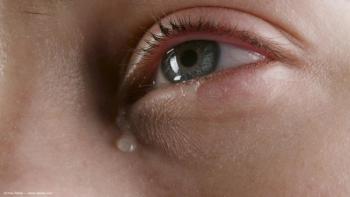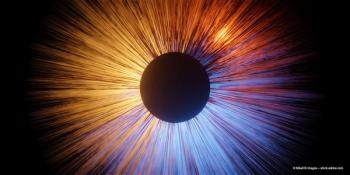
Study: OVDs may alter IOL power calculations
Take Home: The presence of an ophthalmic viscosurgical device may alter the optical results of intraoperative aberrometry, but prevent the need for wound stromal hydration.
By Lynda Charters; Reviewed by Samuel Masket, MD
Los Angeles-Though use of aberrometry intraoperatively increases the accuracy of I
“The metric by which patients measure ophthalmologists is often by the uncorrected visual acuity after surgery,” said Dr. Masket, clinical professor, David Geffen School of Medicine, University of California at Los Angeles. “
To reach the high bar set by patients, aberrometry is being used intraoperatively, because the instrument provides the aphakic refraction. The position and thickness of the natural lens do not come into play, and the anterior and posterior corneal disparities are eliminated, he added.
An intraoperative aberrometer (
Dr. Masket and colleagues previously nested 131 cases of 200 consecutive cases in which the device was used. The 131 cases had only one type of IOL (SN series IOL,
“Ultimately, greater than 90% of the eyes were within 0.5 D of the spherical component of the refractive outcome,” he said.
To achieve such a result, Dr. Masket and his colleagues followed a strict protocol in the study-the important factors of which were removal of the OVD with cortical cleanup, careful stromal hydration, IOP set at physiologic levels, intraoperative measurement with a tonometer, avoidance of speculum and other external forces on the globe, and obtainment of aberrometry readings at least two to three times intraoperatively for consistency, with special focus on the axis and magnitude of cylinder.
However, investigators questioned the need to remove the OVD before aberrometry was performed.
OVDs and lower IOL power
“If the chamber is filled with OVD, no stromal hydration is needed to maintain a leak-free system,” Dr. Masket said. “Concern is that aggressive hydration of the incision alters the corneal curvature.”
To answer the concern about whether the OVD alters the aberrometry readings, in the current study, investigators evaluated 120 eyes in which 6 OVD agents were used (20 eyes in each group). The OVDs included were ProVisc and DisCoVisc (Alcon), Healon and Healon GV (Abbott Medical Optics), and Amvisc and Amvisc Plus (Bausch + Lomb).
Standard aberrometry readings were done after eyes were filled with balanced saline solution (BSS)-which then was replaced with an OVD-and the aberrometry reading was repeated.
The IOL power was selected from the BSS reading and manifest refractions were performed from 2 to 3 weeks postoperatively. Data were analyzed to determine a difference in the suggested IOL power between the BSS and OVD readings.
“In every case, the mean IOL suggested power was lower with OVD than with BSS,” Dr. Masket said. “The mean absolute errors were lower with the BSS than with the OVD. The findings were statistically significant (p < 0.001 and p < 0.026, respectively) with DisCoVisc and Amvisc Plus, which respectively induced ±0.49 and ±0.36 D differences in the IOL power.
“The findings indicate that aberrometry readings performed with certain OVDs in the eye will provide a lower IOL power,” Dr. Masket explained. “The path of light is slowed when it goes through the OVD [due to] the index of refraction. Because the path of light is slowed, the aberrometer assumes that the eye is longer and suggests an IOL with a lower power.”
Though the presence of an OVD may affect the readings obtained with the device, Healon, ProVisc, and Amvisc have a low-molecular weight and low concentration and therefore, are insignificantly different, he continued.
“The surgeon, therefore, can be comfortable using those agents instead of BSS,” he said.
Study findings indicate intraoperative aberrometry adds to the accuracy of IOL power calculations, according to Dr. Masket. The presence of an OVD can alter aberrometry results, but they prevent the need for hydration of the wound.
Surgeons who use the lower molecular weight hyaluraonic-based OVDs can be confident. An alternate to an OVD may be an incisional sealant, Dr. Masket concluded.
Samuel Masket, MD
Dr. Masket is a consultant to WaveTec and has received research funding from the company. The co-authors of the study were Nicole R. Fram, MD, Los Angeles and Jack Holladay, MD, Houston. Dr. Masket won the best paper of session for this presentation at the 2014 meeting of the American Academy of Ophthalmology.
Newsletter
Don’t miss out—get Ophthalmology Times updates on the latest clinical advancements and expert interviews, straight to your inbox.










































